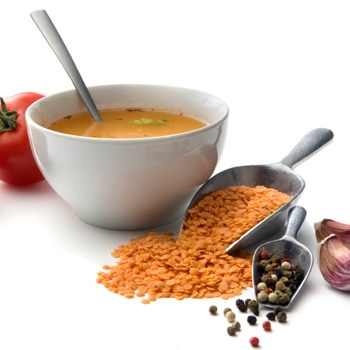
There's nothing like making your own broth. The flavor is richer and more complex than store bought. Even the process of making your own broth is more satisfying. It is surprisingly easy and inexpensive to do. Your homemade broth can be used to make far more than legendary soups. Even more enticing, you can use your homemade broth to create better tasting stews, sauces and gravy, as well as the liquid in stuffing recipes and as a base for many supper dishes.
Cookbooks offer a wide range of recipe ideas for making your own broth but the process is very simple. Broth is the liquid that develops when meat and/or vegetables are simmered in water over a period of time. It really is that simple. Your ingredients can be as traditional or as unusual as you like. Most soup broth or stock recipes focus on one type of meat or seafood or they are vegetable based. The meat is what gives your stock its richness. You can use one meat by itself or you can use a combination.
You can create different kinds of broth by focusing on specific ingredients. You can create a chicken broth by using the bones from a baked chicken. If you want a meatier flavor, add an entire chicken to your broth as it cooks. The meat will need to be discarded when your stock is done as all the moisture and flavor will have transferred to your broth.
A beef broth can be created in the same way, using the most inexpensive cuts. Local butchers will often crack or cut open large beef bones and joints if you ask. A ham broth, created with the leftovers of a traditional baked ham dinner will give you the best split pea soup you've ever had. Fish tails and scraps, shrimp peelings and clam shells can make a superb seafood broth. Vegetable soups get their extra richness from tofu, nuts and legumes or miso.
Making your own broth doesn't cost anything extra. Each time you peel or trim vegetables, put the scraps in a freezer bag instead of the compost pile or the trashcan. Most vegetables store the majority of their flavor and nutrients in their skins, so you are adding a nutritional boost to your family's diet by making your own broth. Also, each time your family serves any type of meat, put the bones, skin and fat trimmings to your broth-making freezer bag.
You can add just about anything to your stock freezer bag as you cook your regular meals. Once you develop the habit, you will find the bag fills rather quickly. It is the variety of ingredients that will give your broth its superior flavor. Celery leaves, potato and carrot peelings, mushroom bits, even the outer leaves from cabbage, lettuce and other greens can be used. Nearly any type of leftover meat or vegetable can be put into your broth. Uneaten bits of corn, peas, mashed potatoes, beans, rice and other grains will all contribute their nutrients and their flavor to your broth.
When you are ready to make your broth, place everything into a large stock pot, fill with cold water and cover. To ensure that all bacteria are destroyed, it is important to initially bring your stock to a rolling boil for a few minutes before reducing the temperature to a simmer. This stock can simmer for days without health risks, but you should remove the bones after 2-3 hours.
After your stock has simmered for an hour or so, take a taste. This is when you should make any necessary additions. Keep in mind that your stock is only the basis of the soup you will create later. You want your stock to have a rich, complex flavor. Bay leaves, salt, pepper, onions, garlic, parsley, tomatoes are all good flavor additions, depending on how you will be using your broth later.
Once your stock has achieved the flavor you want, you will pout it through a strainer and then through a sieve or cheesecloth to remove the solids. The resulting broth must be cooled and stored to prevent bacteria growth. The broth can be stored for a few days in the refrigerator or frozen for several weeks. It is a good idea to package the broth into useful serving sizes. Quart-sizes freezer bags work well. If you have the time and interest, canning is an old-time favorite (and it looks great on those pantry shelves!).
Your homemade broth will give you a good use for all those leftovers and put better nutrition and flavor into your soups and stews. Making your own broth will give your family a warm, delicious smell that's bound to stimulate their appetites and make them glad to be coming home.